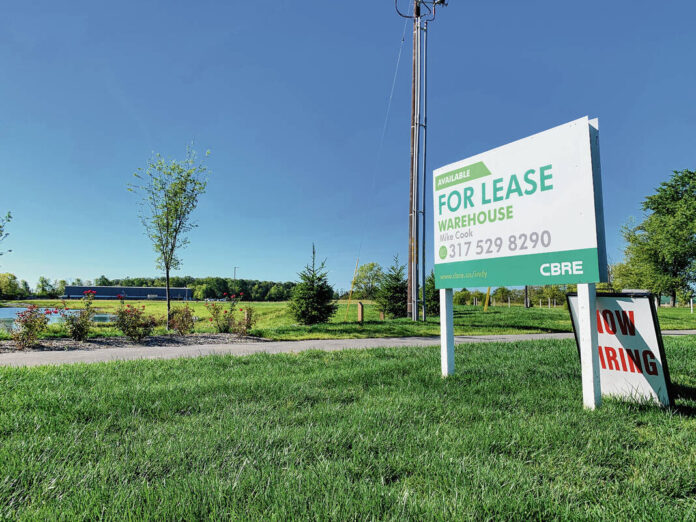
Two speculative buildings are planned just north of where Deaton’s Waterfront Services recently moved to at 3253 W. CR 1000N in Fortville.
Mitchell Kirk | Daily Reporter
FORTVILLE – Officials recently approved a tax break for an industrial building proposed earlier this year and approved a break for another now planned nearby.
Both sites are just north of where Deaton’s Waterfront Services recently moved to at 3253 W. CR 1000N in Fortville. Businessmen Michael Cook and Paul Deaton are behind the endeavor.
One of the buildings will be about 26,000 square feet and is estimated to cost $2.5 million. The Fortville Plan Commission approved plans for the building in May.
Now Cook and Deaton also want to develop a building about 32,000 square feet estimated at $3 million.
Both buildings are planned to be developed on speculation and marketed predominantly to small manufacturing and industrial users. Construction on the 26,000-square-foot building is slated to start this year. Work on the other is eyed for next year, depending on market demand.
Fortville Town Council approved tax abatements earlier this month that will gradually phase in real property taxes on the projects over the course of 10 years.
That’s an important part of the development process, said Chad Sweeney of Ginovus, a Fishers-based consulting firm assisting Cook and Deaton.
“The tenant will be responsible for the payment of property taxes, so this is something that helps make these buildings marketable, make it competitive with other industrial properties in the market, and really is important to attract a high-quality tenant,” Sweeney told Fortville Redevelopment Commission members earlier this month.
Cook echoed that sentiment at the recent town council meeting.
“We’ve had over 150 inquiries for this type of space, but no one will wait until 12 months after we can build it, so we really have to get this before we can stick a shovel in the ground in order to get going,” he said. “Because, trust me, it pains me to no end to turn down 150 people that need space within the next six months.”
Sweeney and Adam Zaklikowski, Fortville planning and building director, noted the businessmen agreed to drawing certain uses to the buildings, otherwise the tax breaks could be terminated. Those uses consist of any kinds permitted under the land’s current light industrial zoning designation, including distribution; service industries like heating, ventilation and air conditioning; mechanical and electrical; manufacturing; and assembly.
“I think, in and of itself, to give an abatement on a spec building is generous,” Zaklikowski told council members. “You want to make sure that it’s incentivizing the right types of uses that’s going to generate employment.”
Council president Fritz Fentz recalled the proposal for the concrete mixing plant next to Cook and Deaton’s site earlier this year that was withdrawn after significant public opposition. But Zaklikowski said officials and residents shouldn’t have to worry about proposals like that with the way Cook and Deaton’s site is zoned.
“The easiest way to explain light industrial is it’s like warehouses, basically,” Zaklikowski said. No smokestacks, nothing that’s going to generate dust or a lot of noise, things of that nature.”
Sweeney estimates both buildings combined would save about $600,000 and generate about that much throughout the course of the tax abatement.
Council members voted 4-1 in favor of the abatement, with Becky Davis, Tonya Davis, Fentz and Libby Wyatt voting in favor and Robert Holland voting against.
Holland said he wishes the businessmen the best, but that there are too many unknowns for him to support the tax break.
“I struggle with tax abatements for spec buildings,” Holland said. “We’ve got a small list of what could be proposed, but right now we don’t know jobs, we don’t know what the business is, we’d basically be abating a shell of a building.”
But Fentz feels there’s still plenty of cushion for the town should the projects result in an undesirable outcome.
“Even if they don’t fill it, they still have to pay the taxes on the building,” Fentz said, adding the council could always terminate the abatement.
Deaton also said that the buildings will exceed the town’s architectural requirements by having masonry halfway up all exterior walls, not just facades.




